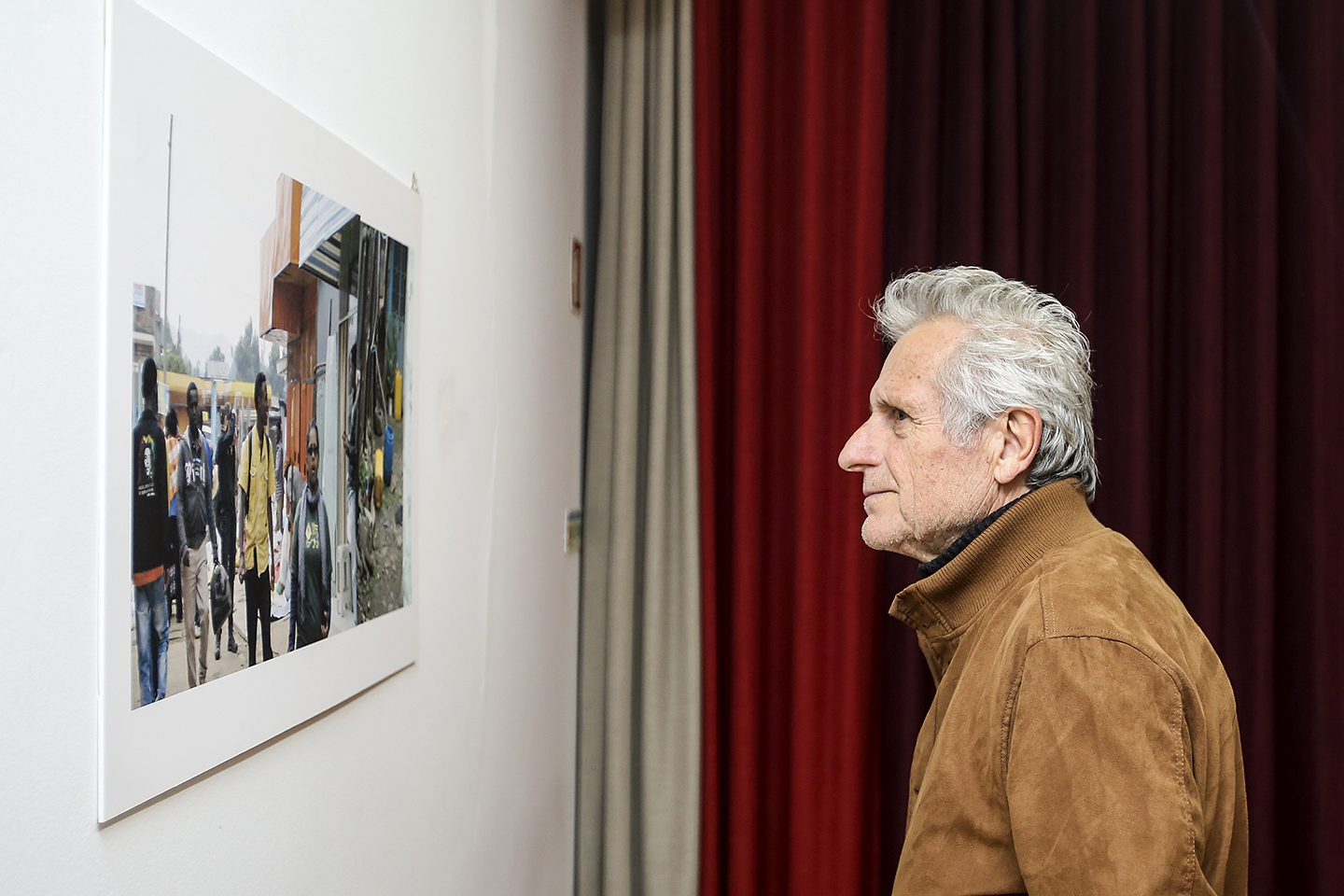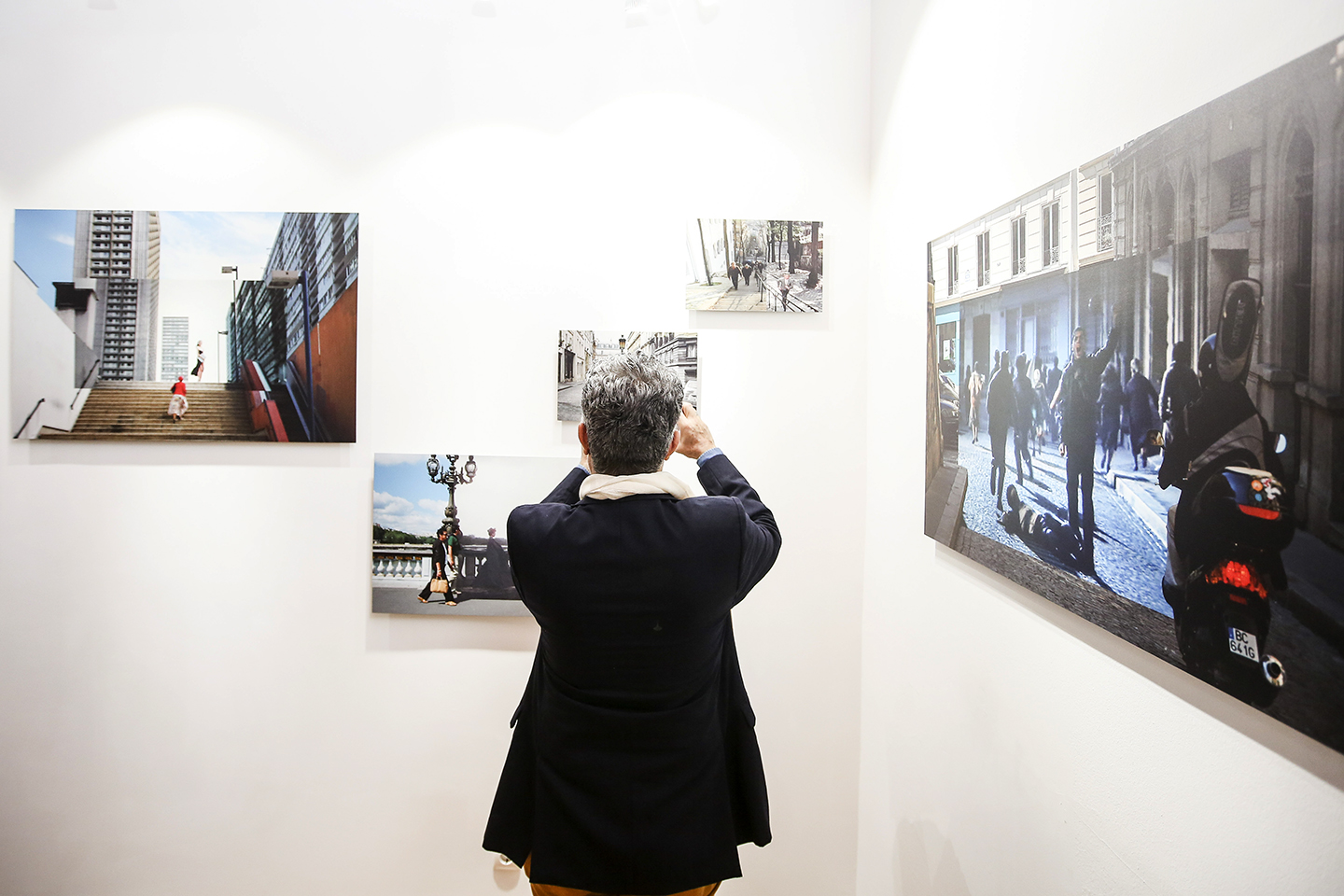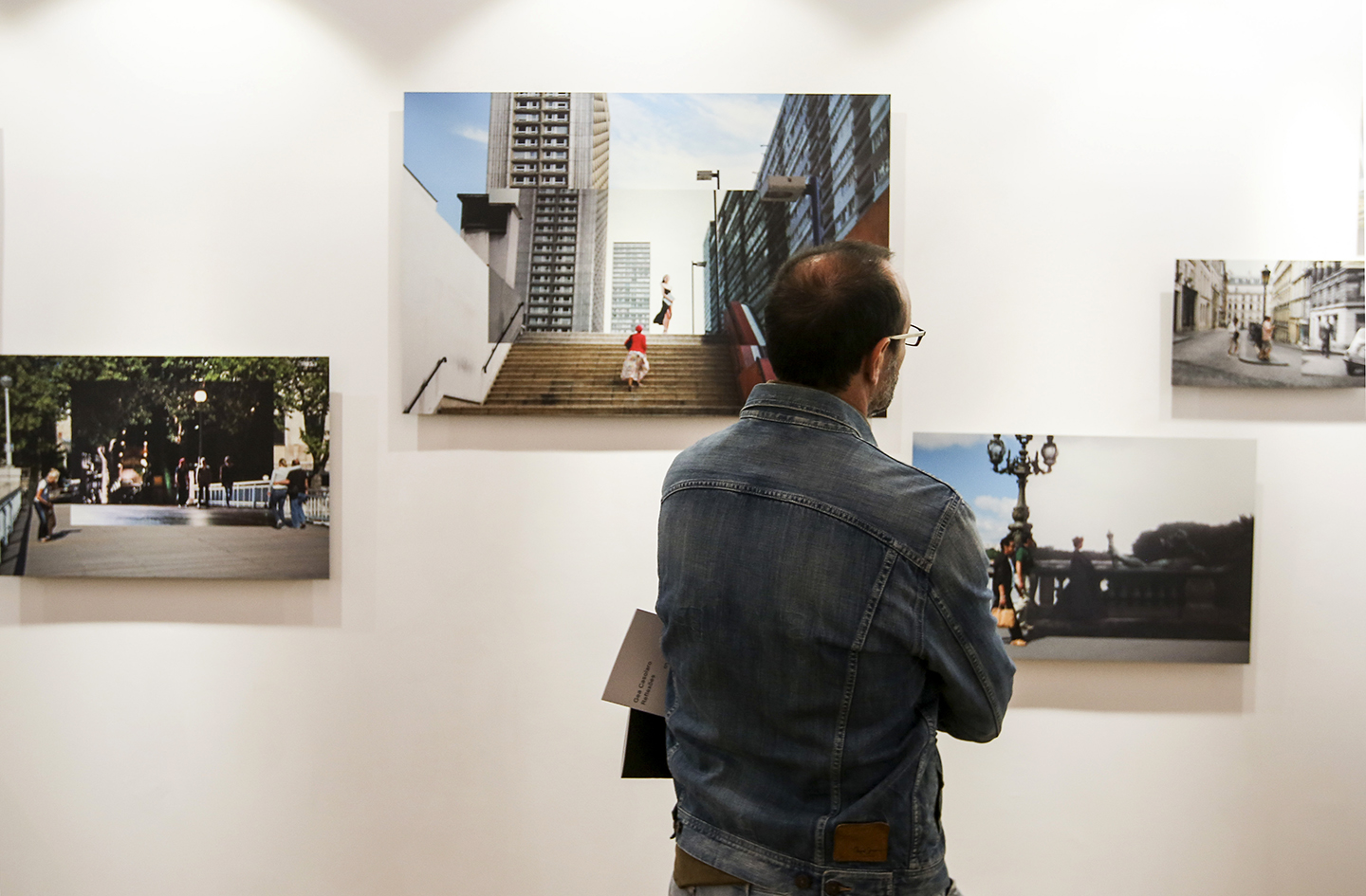 Somewhere in the ‘center’ of each image lies a visual relic (some sort of original ‘take’) being confronted with the unavoidable present, ‘today’s’ present (which, paradoxically – or not – will one day become another aesthetic device’s past). These images appear like ‘family photos’ of some new kind; of course, what is meant here is the idea of the Human (Being) as a Family.
Somewhere in the ‘center’ of each image lies a visual relic (some sort of original ‘take’) being confronted with the unavoidable present, ‘today’s’ present (which, paradoxically – or not – will one day become another aesthetic device’s past). These images appear like ‘family photos’ of some new kind; of course, what is meant here is the idea of the Human (Being) as a Family.
The proximity to cinema culture, aligned with a literal appropriation of movies’ locations – most obvious when Gea points her camera to sites where more or less known narratives found their halt in the flow of time – turns these pictures particularly emotional. Such temporal displacement lingering within their status as a specific photographic apparatus is furthermore a participatory way to engage the viewer with the Global urban scape. It’s a redeeming take on the urban text, actualizing the very essence of urbanity: radical coexistence. In other words, these composite images are in front of our eyes just to reveal a true love for the flow of time. Urban memory shaping emotion and capturing the very Human element in our built environment.
In Gea Casolaro’s work, we’re here, there, and everywhere. Now, then, and forever. The act of photographing and a digital visual apparatus become a spatial-temporal interface whose never-ending thematic dérive forces us to acknowledge it as a common tool for cultural citizenship. Without this kind of cross-visual and cross-temporal way of knowing there would be no citizenship and no awareness of the complexities of urban life. These images, by means of their juxtaposition logic, thus transport us to a most important situation which is an alwaysemerging trait of our social existence: the mesmerized observation of the city as an image across time. Over and over again.
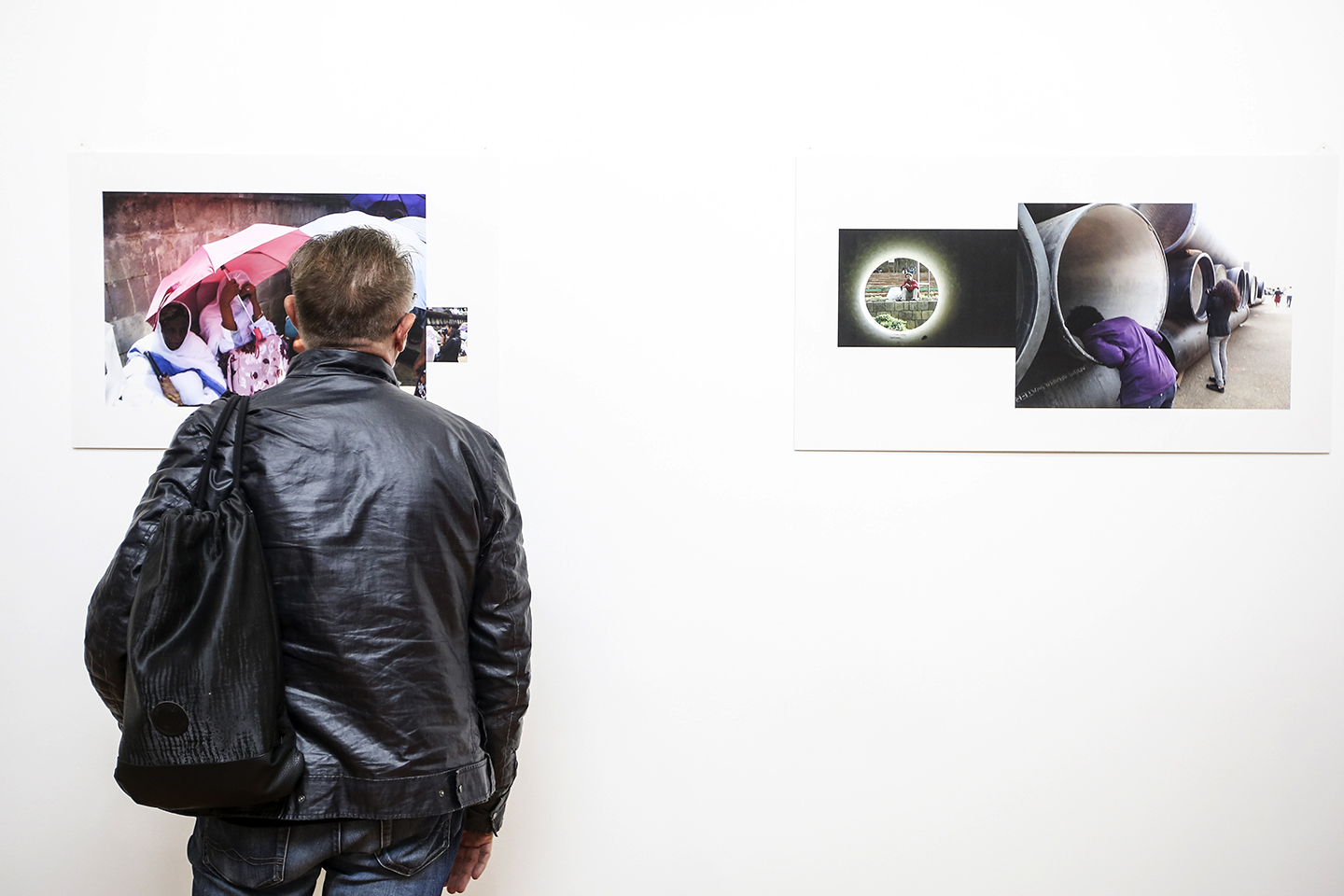
The lines above were written on the series Still Here(2009-2013). One may read in the project’s caption: «Still here is the work developed by Gea Casolaro during her artist-in-residence programme at the atelier of the Incontri Internazionali d’Arte at the Cité Internationale des Arts in Paris, France. Being a foreigner in a city she knew only for being there as a tourist, as well as the condition of uprootedness in a new country, urged Casolaro from the very beginning to deal with the absence of real experiences and therefore with the lack of memory that made her feel related to the new places she chose to live in. The streets of Paris have been the scene of the highest number of movies in the world, it is the city where cinema and photography have taken their first steps, the capital city of the Age of the Enlightenment, the Ville Lumière, where the early motion pictures of the Lumière brothers got screened for the very first time. After watching hundreds of movies filmed in the French capital, and strolling the length and breadth of Paris boroughs, Casolaro has created her own memory of those places through the stories of the characters of the movies, through the vision of their creators. Still here is a work on the total union between art and life: on how it is possible to settle in a place where we do not have a personal historical experience, transforming the hostility of an unknown city into familiarity, into social relationships, into personal memory. Casolaro exploits the cinema as a form of art that includes all the others and in order to describe how culture is a necessary tool of anchorage to reality, how art is a powerful means of knowledge which is necessary to go beyond one’s limits. Each of the over hundred images that compose Still here blends together the still image of the scene of a film shot in a Parisian street, with a photo taken by the artist exactly in that same place.»
The exhibition Riflessioni furthermore presented photographic works from the series Sharing Gazes (2013-2017), Regards Croisées (2013-2017) and the video Autoritratti Infiniti (1999).
Sharing Gazes was realized in Ethiopia in 2013, in collaboration with the Italian Cultural Institute in Addis Abeba, with a group of students from the Alle School of Fine Arts & Design. The artist asked each of the participants to select a place of the city that they thought was worth seeing. They went all together to take pictures of those places, constantly swapping and exchanging their cameras. The photomontages show the participants in the act of taking their photographs, as well as the image shot by each of them at that right moment. Regards Croisés is about what happens when two people look at each other for a while. What really could happen when two gazes meet each other? Just a glance, and then away, again in to the life flow. Autoritratti Infiniti was realized for the second issue of the magazine Artel – Fenomeni contemporanei, for the section dedicated to the artists’ self-portraits.
What all these works have in common is the fact that they are precisely constructed devices letting simple images become part of a poetic inquiry into human co-presence and its awareness. In other words, all works as a particularly Humanist approach of the act of photographing, and somehow, in the tradition of socially charged Conceptual Art, an almost Cubist choreography of the image punctum. In fact, Gea proposes a cognitive sharing of the potential for interaction of the Human gaze. Exhibition held at the Istituto Italiano di Cultura in Lisbon, 2019, as part of ARCO LISBOA 2019. Photography courtesy of the IIC. Special thanks: Luisa Violo. Curator.
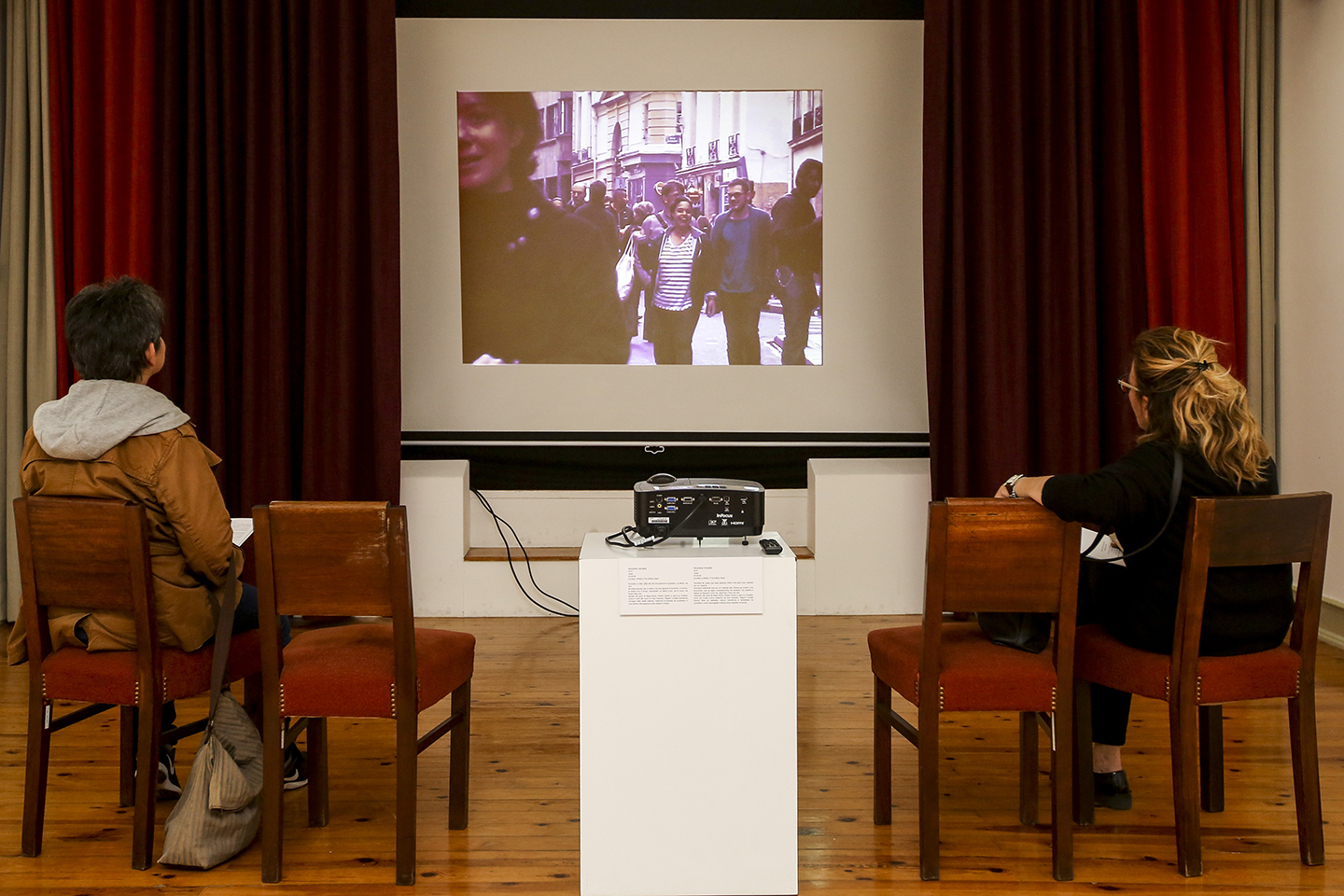
A primeira impressão que se tem ao olhar estas imagens é de uma frescura na abordagem da visualidade que parece derivar da simplicidade do procedimento de edição. O grau de informalidade técnica – que se prolonga no disposto expositivo – alia-se à relação directa com a vida quotidiana urbana num mixque leva estas imagens a parecerem-se com uma espécie de ‘fotos de família’; claro que, por família se entende aqui o (ser) Humano enquanto Família.
A proximidade com a cultura do cinema, alinhada com a apropriação literal de locations cinematográficos – tanto mais óbvia quanto Gea aponta a câmara para sítios onde narrativas mais ou menos conhecidas encontraram a sua pausa no fluxo do tempo – torna estas pictures particularmente emocionais. Este deslocamento temporal, que se demora no seu estatuto de apparatus fotográfico específico, é por outro lado uma via participativa para engajar o/a espectador/a na paisagem urbana global. É uma abordagem redentora do texto urbano, actualizando a própria essência da urbanidade: coexistência radical.
Tudo é por outro lado uma recriação histórica. Em certa medida, a visão materializa-se através de reenactments do clique fotográfico – do momento. Mas o ponto é que o momento original está lá (e de um modo irónico) apenas para exponenciar a ‘momenticidade’ que se encontra na base de qualquer abordagem do histórico que seja movida pela perspectiva. Mesmo a de um espectador distraído. E isto é claro mesmo para a mente curiosa que se passeie através das inventivas paisagens de que estas fotografias são a cartografia. Por outras palavras, estas imagens compósitas estão diante dos nossos olhos apenas para nos revelarem um amor verdadeiro pelo fluxo do tempo. A memória urbana moldando a emoção e capturando o próprio elemento Humano no meio construído.
No trabalho de Gea Casolaro, estamos aqui, ali, e em toda a parte. Agora, outrora, e para sempre. O acto de fotografar e o apparatusvisual digital funcionam como um interface espacio-temporal cuja infindável deriva temática nos obriga a reconhecê-lo como uma ferramenta comum para a cidadania cultural. Sem este tipo de conhecimento trans-visual e trans-temporal não haveria cidadania nem a consciência das complexidades da vida urbana. Estas imagens, através da sua lógica de sobreposição, transportam-nos assim para uma extremamente importante situação que representa um aspecto sempremergente da nossa existência social: a observação encantada da cidade como imagem através do tempo. Over and over again.
As linhas supra constituem uma reflexão sobre a série Still Here, realizada entre 2009 e 2013. A exposição Riflessioni apresenta ainda fotografias das séries Sharing Gazes (2013-2017), Regards Croisées (2013-2017) e o vídeo Autoritratti Infiniti (1999). O que estas obras têm em comum é o facto de se constituírem como dispositivos construídos com enorme precisão, que permitem que simples imagens se tornem parte de poéticas investigações acerca do humano em consciente co-presença. Por outras palavras, estamos diante de um abordagem particularmente humanista do gesto de fotografar, e de alguma forma, no espírito da Arte Conceptual mais social, na esfera de uma quase cubista coreografia do punctum da imagem. Na verdade, Gea emprende uma partilha cognitiva do potencial de interacção do olhar humano. Exposição integrada na ARCO LISBOA 2019. Fotografias cortesia do IIC. Agradecimento especial: Luisa Violo. Curadoria.

